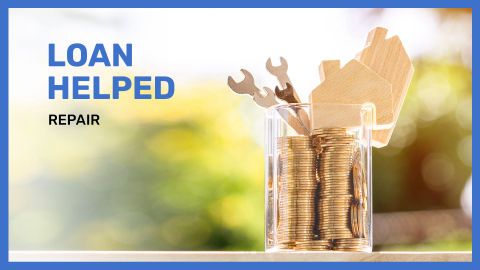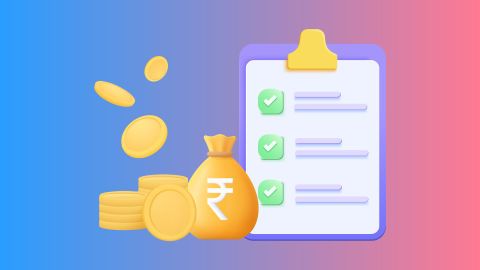3 min
13-August-2024
When navigating the world of personal loans, or mortgages, one key factor to consider is the Annual Percentage Rate (APR). APR represents the cost of borrowing money, expressed as a yearly interest rate. However, not all APRs are created equal. They generally fall into two categories: Fixed APR and Variable APR. This article explores these two types of APRs, their advantages and disadvantages, and helps you decide which might be better for your financial situation.
Additional read: What is annual percentage rate
Predictable payments: One of the most significant advantages of a Fixed APR is the predictability it offers. Your monthly payments remain consistent, making it easier to budget and manage your finances without worrying about interest rate fluctuations.
Protection against rate increases: With a Fixed APR, you’re shielded from increases in interest rates. If market rates rise, your APR stays the same, potentially saving you money compared to a Variable APR that could increase with market rates.
Stability: Fixed APRs provide stability, which is particularly valuable for long-term loans or credit card balances. This stability can be reassuring, especially during periods of economic uncertainty.
Cons:
Potentially higher initial rates: Fixed APRs often come with a higher initial rate compared to Variable APRs. This means you might pay more in interest initially, even though your rate will remain steady.
Less flexibility: Fixed APRs lack the flexibility that Variable APRs can offer. If market rates decrease, you won’t benefit from a lower interest rate. Essentially, you’re locked into the rate agreed upon at the outset.
Higher costs if rates fall: If the overall interest rates in the market fall, your Fixed APR remains unchanged. You could end up paying more in interest compared to what you might have paid with a Variable APR.
Potentially lower initial rates: Variable APRs often start with a lower rate than Fixed APRs. This can lead to lower initial interest costs, which is particularly beneficial if you plan to pay off your balance quickly.
Opportunity for lower rates: If market interest rates decline, your Variable APR may also decrease, potentially reducing your borrowing costs over time.
Potential for savings: For those who can pay off their balances before significant rate increases occur, a Variable APR can result in overall lower interest costs compared to a Fixed APR.
Cons:
Unpredictable payments: One of the main drawbacks of Variable APRs is the unpredictability of payments. As interest rates fluctuate, your monthly payments can vary, which can complicate budgeting and financial planning.
Risk of rate increases: If the benchmark rate rises, your APR will increase as well. This can lead to higher monthly payments and increased overall borrowing costs, particularly if rates rise significantly.
Volatility: The variability can be a significant downside, especially in volatile economic periods where interest rates might swing dramatically. This can make financial management more challenging.
Consider a fixed APR if: You value stability and predictability in your payments. If you have a long-term loan or credit card balance, and you prefer consistent monthly payments without the risk of rate increases, a Fixed APR might be the better option. It’s also beneficial if you anticipate economic uncertainty and want to protect yourself from potential rate hikes.
Consider a variable APR if: You’re comfortable with some level of financial uncertainty and prefer to take advantage of potentially lower initial rates. If you plan to pay off your balance relatively quickly or you’re confident that market rates will remain stable or decrease, a Variable APR could save you money in the long run.
Additional read: Fixed vs floating interest rates
Ultimately, the choice between Fixed and Variable APR should align with your financial goals, risk tolerance, and the nature of your loan or credit card use.
By carefully considering your preferences and financial situation, you can select the personal loan that best fits your needs and helps you manage your finances effectively.
What is APR?
APR, or Annual Percentage Rate, is the yearly interest rate charged on loans or credit cards, including any fees or additional costs. It represents the true cost of borrowing over a year and is expressed as a percentage. APR helps you compare different financial products by showing the total annual cost, making it easier to understand the full impact of interest and fees on your borrowing.Additional read: What is annual percentage rate
What is a fixed APR?
A Fixed APR, as the name suggests, remains constant throughout the life of the loan or credit card. This means that the interest rate you start with will not change, regardless of fluctuations in the broader financial market. Fixed APRs provide stability and predictability, allowing you to plan and budget with confidence.Pros and cons of fixed APRs
Pros:Predictable payments: One of the most significant advantages of a Fixed APR is the predictability it offers. Your monthly payments remain consistent, making it easier to budget and manage your finances without worrying about interest rate fluctuations.
Protection against rate increases: With a Fixed APR, you’re shielded from increases in interest rates. If market rates rise, your APR stays the same, potentially saving you money compared to a Variable APR that could increase with market rates.
Stability: Fixed APRs provide stability, which is particularly valuable for long-term loans or credit card balances. This stability can be reassuring, especially during periods of economic uncertainty.
Cons:
Potentially higher initial rates: Fixed APRs often come with a higher initial rate compared to Variable APRs. This means you might pay more in interest initially, even though your rate will remain steady.
Less flexibility: Fixed APRs lack the flexibility that Variable APRs can offer. If market rates decrease, you won’t benefit from a lower interest rate. Essentially, you’re locked into the rate agreed upon at the outset.
Higher costs if rates fall: If the overall interest rates in the market fall, your Fixed APR remains unchanged. You could end up paying more in interest compared to what you might have paid with a Variable APR.
What is a variable APR?
A Variable APR fluctuates based on changes in an underlying benchmark interest rate, such as the Prime Rate. This means that as market interest rates rise or fall, your APR—and therefore your payments—can change accordingly. Variable APRs are often tied to an index rate plus a margin.Pros and cons of variable APRs
Pros:Potentially lower initial rates: Variable APRs often start with a lower rate than Fixed APRs. This can lead to lower initial interest costs, which is particularly beneficial if you plan to pay off your balance quickly.
Opportunity for lower rates: If market interest rates decline, your Variable APR may also decrease, potentially reducing your borrowing costs over time.
Potential for savings: For those who can pay off their balances before significant rate increases occur, a Variable APR can result in overall lower interest costs compared to a Fixed APR.
Cons:
Unpredictable payments: One of the main drawbacks of Variable APRs is the unpredictability of payments. As interest rates fluctuate, your monthly payments can vary, which can complicate budgeting and financial planning.
Risk of rate increases: If the benchmark rate rises, your APR will increase as well. This can lead to higher monthly payments and increased overall borrowing costs, particularly if rates rise significantly.
Volatility: The variability can be a significant downside, especially in volatile economic periods where interest rates might swing dramatically. This can make financial management more challenging.
Which Is better: Fixed or Variable APR?
Choosing between Fixed and Variable APR depends largely on your financial situation, risk tolerance, and how long you plan to carry a balance.Consider a fixed APR if: You value stability and predictability in your payments. If you have a long-term loan or credit card balance, and you prefer consistent monthly payments without the risk of rate increases, a Fixed APR might be the better option. It’s also beneficial if you anticipate economic uncertainty and want to protect yourself from potential rate hikes.
Consider a variable APR if: You’re comfortable with some level of financial uncertainty and prefer to take advantage of potentially lower initial rates. If you plan to pay off your balance relatively quickly or you’re confident that market rates will remain stable or decrease, a Variable APR could save you money in the long run.
Additional read: Fixed vs floating interest rates
Conclusion
Understanding the differences between Fixed APR and Variable APR is crucial for making informed financial decisions. Fixed APRs offer stability and predictability, making them suitable for those who prefer consistent payments and protection against rate increases. On the other hand, Variable APRs can offer lower initial rates and potential savings if market rates decrease, but they come with the risk of fluctuating payments and potential rate increases.Ultimately, the choice between Fixed and Variable APR should align with your financial goals, risk tolerance, and the nature of your loan or credit card use.
By carefully considering your preferences and financial situation, you can select the personal loan that best fits your needs and helps you manage your finances effectively.




